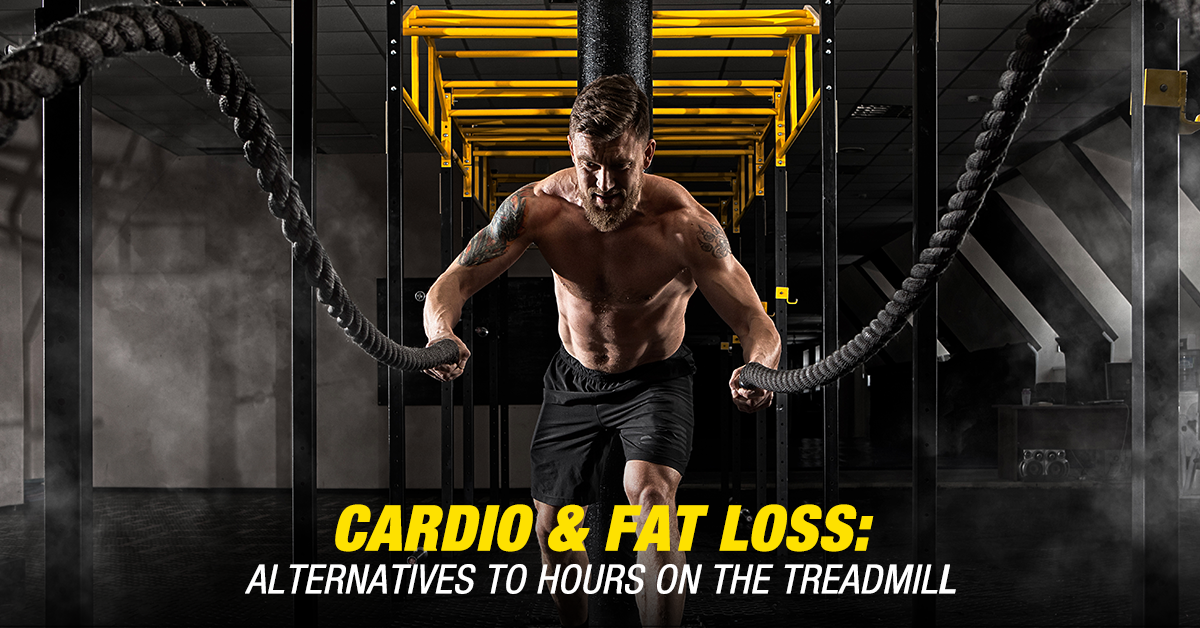Cardio and fat loss: Alternatives to hours on the treadmill

When it comes to fat loss, the first thing that comes to mind is usually cardio. And while it's true that cardio can be an effective way to burn calories and lose fat, spending hours on the treadmill or elliptical can be monotonous and even discouraging. There is a common misconception around fat loss, and this is that cardio is the only tool needed to lose weight. This isn’t exactly true.
Fat loss relies more on a caloric deficit than exercise, studies have shown that dietary restriction results in weight loss even without any strength or cardiovascular training. That doesn’t mean that exercise and cardio are useless, rather exercise allows you to build lean muscle and tone faster and more efficiently than using only a diet. Fortunately, there are plenty of other alternatives to traditional cardio that can help you achieve your fat loss goals.
High-Intensity Interval Training (HIIT):
HIIT is a type of workout that involves short bursts of high-intensity exercise followed by periods of rest or low-intensity exercise. This type of workout has been shown to be more effective for fat loss than traditional cardio, as it can help increase your metabolic rate and burn more calories in a shorter amount of time. Examples of HIIT workouts include sprints, jump squats, and burpees all performed in quick succession with minimal rest followed by an extended rest period or interval.
HIIT training is different from cardio in that HIIT training uses more oxygen than the body is able to provide and spikes the heart rate more than traditional cardiovascular training. Cardio is aerobic, meaning with oxygen, where carbs and fats are broken down to produce energy. During this process there is no lactic acid build up, with HIIT because it is performed in an oxygen deficit lactic acid begins to build as you reach maximal output. Since HIIT can only be performed for short periods before rest is needed to continue this results in more calories being burned than traditional cardio.
Resistance Training or Strength Training
Resistance training, also known as strength training, involves using weights or resistance bands to build muscle. While it may not burn as many calories as cardio during the workout itself, it can help increase your muscle mass and boost your metabolism, leading to greater fat loss over time. This is because muscle needs more calories than fat, so building muscle will naturally increase your required daily calories and result in more calories burned at rest or during light activity. Plus, building muscle can give your body a more toned and defined appearance.
Yoga or pilates
While yoga may not seem like a fat-burning workout at first glance, it can actually be a great way to reduce stress and improve flexibility, both of which can aid in weight loss. Certain types of yoga, such as power yoga, can also provide a cardiovascular workout while building strength and endurance. If a beginner yoga class is not challenging enough you can always try more advanced and intermediate poses and movements. Yoga relies heavily on manipulation and control of your body weight and joints, improving your yoga skills will allow greater flexibility and overall muscle endurance when training.
In conclusion, cardio is not the only way to lose fat. There are plenty of alternative workouts that can be just as effective and much more enjoyable. By incorporating a variety of workouts into your routine, you can stay motivated and engaged while achieving your fat loss goals.
References:
https://www.shape.com/fitness/workouts/8-cardio-myths-are-making-you-fat
https://greatist.com/fitness/is-cardio-necessary-for-fat-loss#fat-loss-without-cardio
https://www.mensjournal.com/health-fitness/best-types-cardio-workouts-weight-loss
Boutcher, S. H. (2011). High-intensity intermittent exercise and fat loss. Journal of obesity, 2011.
Mertens, D. J., Kavanagh, T., Campbell, R. B., & Shephard, R. J. (1998). Exercise without dietary restriction as a means to long-term fat loss in the obese cardiac patient. The Journal of sports medicine and physical fitness, 38(4), 310-316.





